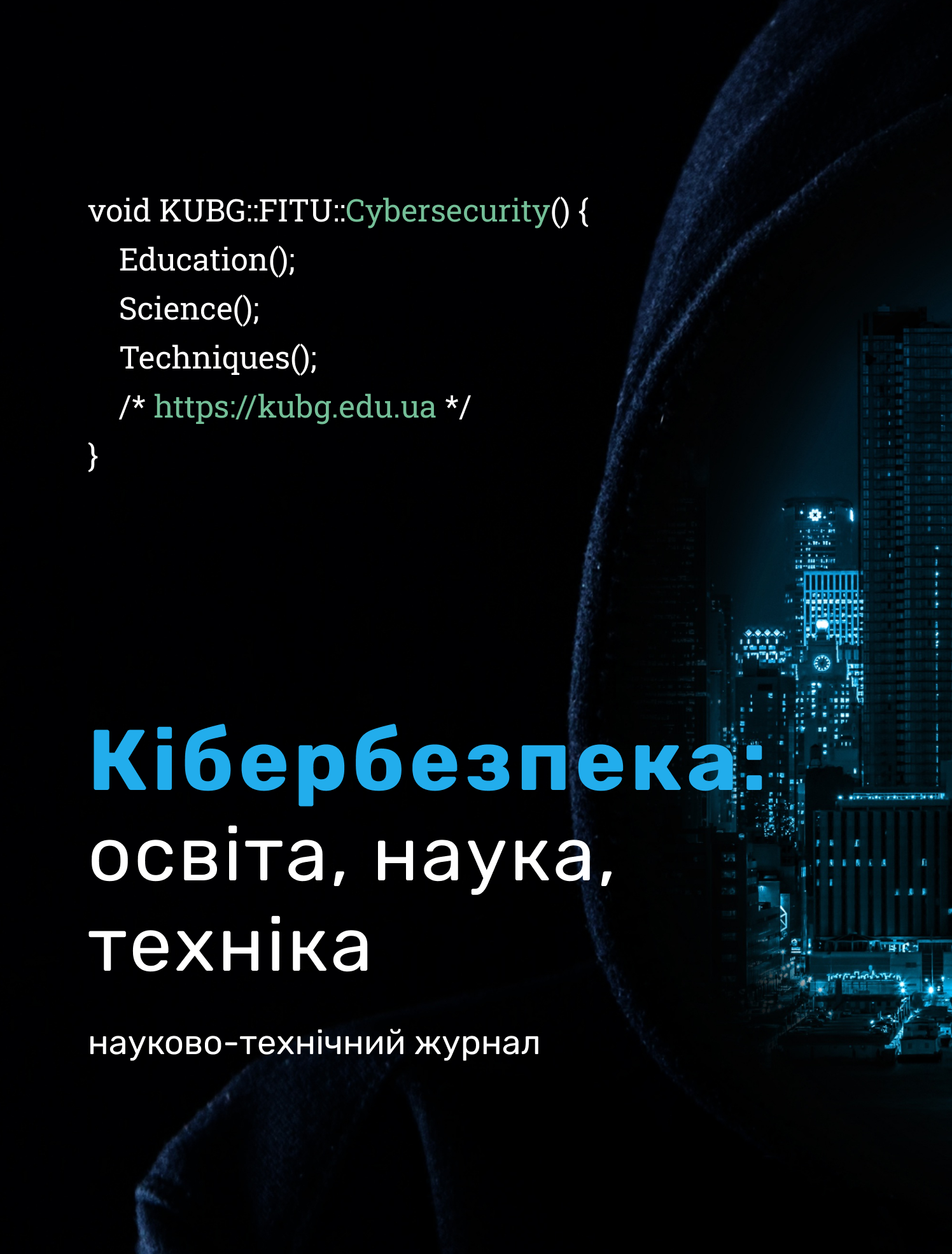РЕАЛІЗАЦІЯ ОБЧИСЛЮВАЛЬНОГО ЯДРА ІНТЕЛЕКТУАЛЬНОЇ СИСТЕМИ ПІДТРИМКИ ВНУТРІШНЬОГО АУДИТУ
DOI:
https://doi.org/10.28925/2663-4023.2025.28.781793Ключові слова:
інтелектуальна система; внутрішній аудит; архітектура програмного забезпечення; інформаційна системи; обробка даних; логістична регресія; XGBoost; REST API; підтримка прийняття рішень.Анотація
Інтеграція українських підприємств у європейський економічний простір, залучення іноземних інвестицій, реформування облікової та управлінської політики вимагають від суб’єктів господарювання в Україні забезпечення високого рівня прозорості та контролю. Однак, значна кількість вітчизняних підприємств усе ще використовує застарілі інструменти внутрішнього контролю. А це не дозволяють виявляти приховані ризики, оцінювати ефективність управління чи формулювати вчасні управлінські рішення. У статті представлено результати дослідження, спрямованого на деталізацію архітектури інтелектуальної системи підтримки внутрішнього аудиту суб’єкта господарювання (ІСПВА). На основі аналізу функціональних вимог до ІСПВА запропоновано три рівні архітектурного моделювання: високорівневу структуру компонентів, деталізовану схему обробки транзакційних даних та схему інтеграції з корпоративними системами. Запропонована у статі структура обчислювального ядра передбачає модулі попередньої обробки, нормалізації та генерації ознак, а також реалізацію ансамблевих прогнозних моделей на основі логістичної регресії та XGBoost. Під час дослідження увага приділена питанням валідації вхідних даних та автоматичного переобчислення моделей при виявленні значних відхилень у структурі ознак. Розроблений механізм API-інтеграції із зовнішніми системами (CRM, ERP, документообіг) базується на принципах REST-архітектури, а також передбачає застосування засобів аутентифікації (OAuth 2.0). Запропонована архітектура забезпечує гнучкість, масштабованість та інтерпретованість процесів підтримки прийняття рішень в аудиті. Отримані результати можуть слугувати методологічною основою для практичної реалізації систем інтелектуального аудиту у корпоративному середовищі.
Завантаження
Посилання
Hnatchenko, D. D. (2023). Modeliuvannia intelektualnoi systemy pidtrymky vnutrishnoho audytu subiekta hospodariuvannia. Upravlinnia rozvytkom skladnykh system. Kyiv, (54), 114–121 https://doi.org/10.32347/2412-9933.2023.54.114-121
Kryvoruchko, Olena. "Funktsionalni osoblyvosti intelektualnoi systemy vnutrishnoho audytu." Elektronne fakhove naukove vydannia «Kiberbezpeka: osvita, nauka, tekhnika» 4.24 (2024): 40–49. https://doi.org/10.28925/2663-4023.2024.24.4049
Demianenko, T. Ye. (2016). Teoretychni aspekty pohlyblennia sutnosti vnutrishnoho audytu. Oblik i finansy, (3), 122–127. http://www.irbis-nbuv.gov.ua/cgi-bin/irbis_nbuv/cgiirbis_64.exe?I21DBN=LINK&P21DBN=UJRN&Z21ID=&S21REF=10&S21CNR=20&S21STN=1&S21FMT=ASP_meta&C21COM=S&2_S21P03=FILA=&2_S21STR=Vonu_econ_2013_18_1_10
Dotsenko, I. O. (2013). Formation of a system for assessing the level of economic security of an enterprise taking into account the impact of entrepreneurial risks. Bulletin of the Odessa National University. Economics, (18, Issue 1), 69-78. http://www.economy.nayka.com.ua/?op=1&z=5953
Adamenko, M. I., Berezutskyi, V. V., Kuchuk, N. H., Palant, O. Yu. (2015). Zahalnosystemnyi ryzyk vidmovy systemy pislia modernizatsii. Systemy obrobky informatsii, (10), 159–162. http://www.irbis-nbuv.gov.ua/cgi-bin/irbis_nbuv/cgiirbis_64.exe?I21DBN=LINK&P21DBN=UJRN&Z21ID=&S21REF=10&S21CNR=20&S21STN=1&S21FMT=ASP_meta&C21COM=S&2_S21P03=FILA=&2_S21STR=soi_2015_10_36
Odrekhivskyy, M., Darmits, R., & Zhezhukha, V. (2022). INTELLECTUAL INFORMATION SYSTEMS FOR MONITORING THE COMPETENCES OF MANAGERS OF INNOVATIVE ENTERPRISES. Financial and Credit Activity Problems of Theory and Practice, 5(46), 222–238. https://doi.org/10.55643/fcaptp.5.46.2022.3884
Loi, A. V. (2023). Identyfikatsiia ryzykiv formuvannia ekonomichnoho potentsialu pidpryiemstva torhivli. Aktual'ni Problemy Ekonomiky = Actual Problems in Economics, (265), 47–56.
Huang, J. C., Tsai, Y. C., Wu, P. Y., Lien, Y. H., Chien, C. Y., Kuo, C. F., & Kuo, C. H. (2020). Predictive modeling of blood pressure during hemodialysis: a comparison of linear model, random forest, support vector regression, XGBoost, LASSO regression and ensemble method. Computer methods and programs in biomedicine, 195, 105536. DOI:10.1016/j.cmpb.2020.105536
Fatima, S., Hussain, A., Amir, S. B., Ahmed, S. H., & Aslam, S. M. H. (2023). XGBoost and random forest algorithms: an in depth analysis. Pakistan Journal of Scientific Research, 3(1), 26-31. DOI:10.57041/pjosr.v3i1.946
Demyanenko, T. Ye. (2016). Theoretical aspects of deepening the essence of internal audit. Accounting and Finance, (3), 122-127. http://www.irbis-nbuv.gov.ua/cgi-bin/irbis_nbuv/cgiirbis_64.exe?I21DBN=LINK&P21DBN=UJRN&Z21ID=&S21REF=10&S21CNR=20&S21STN=1&S21FMT=ASP_meta&C21COM=S&2_S21P03=FILA=&2_S21STR=Vonu_econ_2013_18_1_10
Pererva, P., Maslak, O., Kobieleva, T., Kuchynskyi, V., Illiashenko, S. (2021). Efektyvnist informatsiinykh tekhnolohii v upravlinni intelektualnoiu vlasnistiu promyslovoho pidpryiemstva. Visnyk Natsionalnoho tekhnichnoho universytetu "Kharkivskyi politekhnichnyi instytut" (ekonomichni nauky), (1), 53–58. https://doi.org/10.20998/2519-4461.2021.1.53
Chornohus, H. O. (2016). Ahentna model intelektualnoi informatsiinoi systemy upravlinnia v ekonomitsi. Visnyk Kyivskoho natsionalnoho universytetu imeni Tarasa Shevchenka. Ekonomika, (1), 41–47. http://dx.doi.org/10.17721/1728-2667.2016/178-1/7
Опубліковано
Як цитувати
Номер
Розділ
Ліцензія
Авторське право (c) 2025 Дмитро Гнатченко, Альона Десятко

Ця робота ліцензується відповідно до Creative Commons Attribution-NonCommercial-ShareAlike 4.0 International License.




